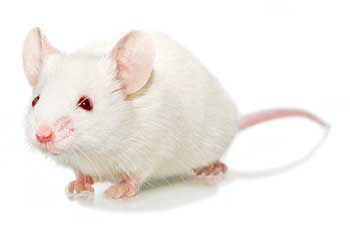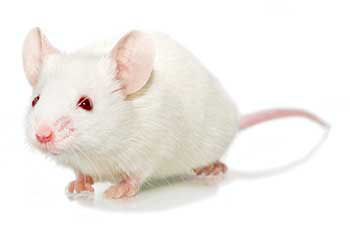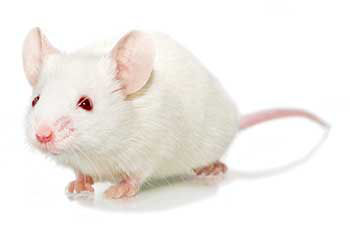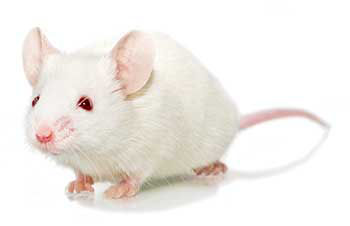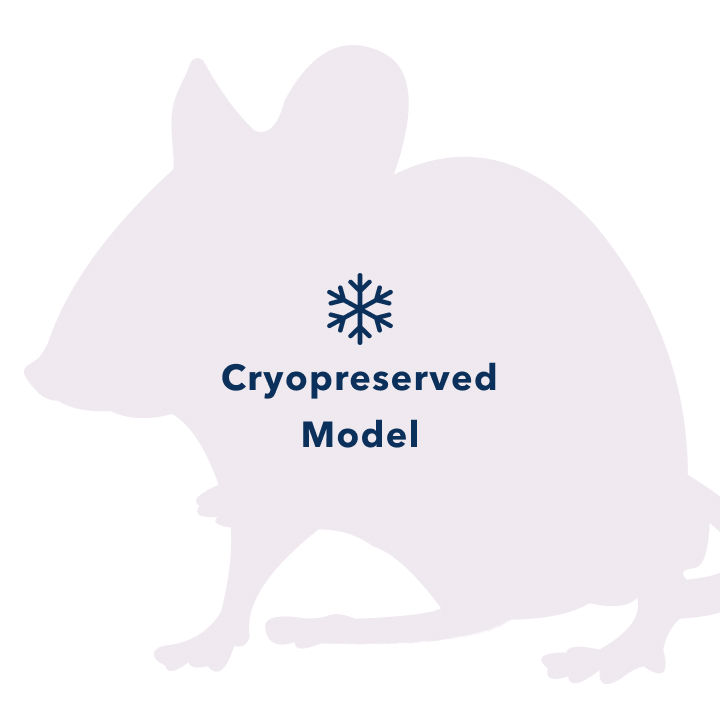| Model No. | Nomenclature | Genotype |
|---|---|---|
| 7353 | B6.Cg-Portm1Wolf Tg(Alb-cre)21Mgn N7 | Inquire for genotype |
HRN™

- Description
- Price & Licensing
- Overview
- Genetics
- Guides & Publications
- Applications & Therapeutic Areas
- Transit, Housing & Welfare
- Diet
Overview
Nomenclature: B6.Cg-Portm1Wolf Tg(Alb-cre)21Mgn N7
- HRN™ stands for Hepatic cytochrome P450 Reductase Null
- Mice are homozygous for both the floxed Por allele and the Alb-cre transgene
- Exhibits liver-specific conditional disruption of the Por gene; POR is the electron donating enzyme for all cytochrome P450 enzymes
- Lacks first pass metabolism by P450 enzymes in the liver
- Can be used to determine the role of hepatic P450 metabolism in drug disposition
- Useful for in vivo efficacy studies using smaller amounts of compound
- Can provide information on whether parent or metabolite compounds are responsible for observed efficacy or toxic effects
Origin
The HRN™ mouse was developed in the laboratory of C. Roland Wolf of the Ninewells Hospital & Medical School. The model was created by targeting the Por gene to generate a floxed allele in GK129/1 embryonic stem cells derived from 129P2 mice and injecting the targeted cells into C57BL/6 blastocysts. Resultant chimeras were backcrossed to C57BL/6 for one generation. Mice heterozygous for the floxed Por allele were intercrossed to generate mice homozygous for the floxed Por allele on a mixed B6;129P2 background. The Alb-cre transgene was developed in the laboratory of Mark A. Magnuson at Vanderbilt University School of Medicine by microinjecting Cre recombinase gene under the control of the rat albumin enhancer/promoter into B6D2F2 zygotes. Mice homozygous for the floxed Por allele were bred to carriers for the Alb-cre transgene to generate HRN™ mice. The HRN™ model was backcrossed to C57BL/6J a total of 6 generations (N6). Taconic received stock from CXR Biosciences in April 2007. The mice were backcrossed to C57BL/6NTac (N7) and embryo transfer derived. The colony was maintained through mating of mice that are homozygous for the floxed Por allele and homozygous for the Alb-cre transgene.
This model is cryopreserved and available for recovery. Models can typically be recovered and delivered to customers within 12 weeks after order receipt. Purchase of this model includes perpetual use rights and a deliverable of four mutant animals at the Murine Pathogen Free™ health standard along with a genotyping protocol. For models which include a recombinase gene or multiple alleles, all alleles will be provided, but individual animals may not contain all mutant alleles.
Taconic’s Colony Management experts can design a plan to grow your colony faster.
Genetics
Guides & Publications
Initial Publication:
Henderson CJ, Otto DME, Carrie D, Magnuson MA, McLaren AW, Rosewell I, Wolf CR. (2003) Inactivation of the hepatic cytochrome P450 system by conditional deletion of hepatic cytochrome P450 reductase. J Biol Chem 278(15):13480-13486.
Applications & Therapeutic Areas
- ADMET
Transit, Housing & Welfare
Need more info? Click the live chat button or Contact Us
Diet
- Licensing
- Pricing - USD
- Pricing - EUR
- Pricing - DKK
- Select my Health Standard
- Get Custom Pricing Guide
HRN™
This model is sold under terms which grant perpetual use rights.
Pricing - USD
7353-EZcohort-4
| Item | Commercial | Nonprofit |
|---|---|---|
| Cryopreserved Model | US$21,000.00 | US$13,000.00 |
Cryopreserved models are invoiced upon shipment of recovered animals. Once orders are placed, the full purchase price will be applied if the order is canceled. For orders greater than 4 animals, please contact Taconic for options.
Fees for Taconic Transit Cages™ and freight are in addition to the price above.
Pricing - EUR
7353-EZcohort-4
| Item | Commercial | Nonprofit |
|---|---|---|
| Cryopreserved Model | 21.000,00 € | 13.000,00 € |
Cryopreserved models are invoiced upon shipment of recovered animals. Once orders are placed, the full purchase price will be applied if the order is canceled. For orders greater than 4 animals, please contact Taconic for options.
Fees for Taconic Transit Cages™ and freight are in addition to the price above.
Pricing - DKK
7353-EZcohort-4
| Item | Commercial | Nonprofit |
|---|---|---|
| Cryopreserved Model | kr.156.699,00 | kr.97.004,00 |
Cryopreserved models are invoiced upon shipment of recovered animals. Once orders are placed, the full purchase price will be applied if the order is canceled. For orders greater than 4 animals, please contact Taconic for options.
Fees for Taconic Transit Cages™ and freight are in addition to the price above.
Select my Health Standard
Need help choosing the right Taconic Biosciences health standard for your research?
Use the Health Standard Selector to enter your exclusion list. The tool will tell you which health standards meet your requirements.
Get custom pricing guide
Schedule A Scientific Consultation
Connect directly with a member of our Scientific Solutions team who can help you select the most appropriate model and maximize your experimental success.
















.jpg)

.jpg)
.jpg)
.jpg)
.jpg)





.jpg)


.jpg)
.jpg)




.jpg)




.jpg)

.jpg)




